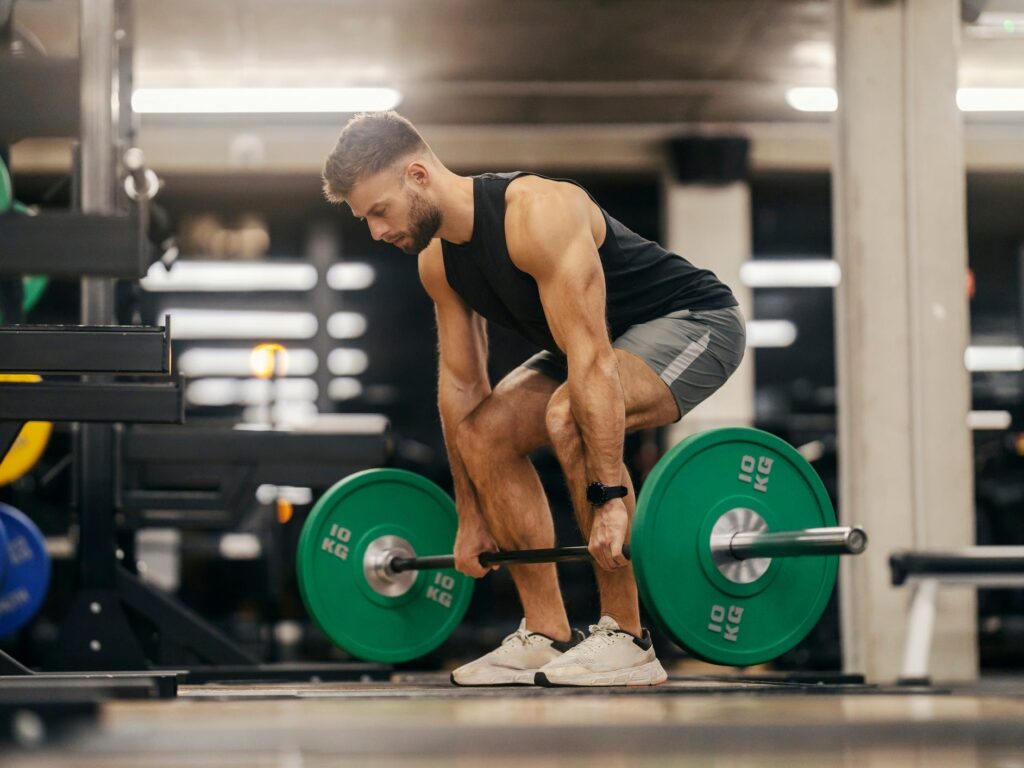- Many of us want to get buff for aesthetic reasons, but building muscle boosts health and longevity, too.
- It's a myth that you need to spend hours in the gym to build muscle.
- Exercises such as squats, deadlifts, and hip thrusts can help build lower body muscle efficiently.
Muscle-building is big business. The global protein supplement market is expected to be worth $38.36 billion by 2029, according to Precedence Research, and the rise of "bigorexia" alongside increasingly jacked movie stars suggests our preoccupation with muscularity isn't going away any time soon.
But one thing that is often ignored amid the obsession with looking ripped is that building muscle can bring huge health benefits for both men and women.
Being stronger and having decent muscle mass can help people stay independent as they age, reducing the risk of injury and falls. Having more muscle also means the body burns more calories throughout the day.
Building lower body muscle in particular can help support joints that often experience discomfort, such as the knees, while stronger glutes can reduce back pain.
And while you may think you need to spend upwards of six hours a week in the gym to build muscle, it's not necessarily the amount of training that matters most. What it really requires is challenging — but not necessarily lengthy — resistance training sessions, eating in a calorie surplus with plenty of protein, and getting enough rest.
Cliff Wilson, a bodybuilder and industry-leading physique coach, told Business Insider that while training a lot, such as working out for 90 minutes five to six days a week, may optimize muscle growth, you can still build muscle with lower training volumes.
"There's a difference between making progress and optimizing progress," he said.
To get the most out of your lower body workouts, choose exercises that cover multiple muscle groups at once — these are called compound exercises.
Here are five exercises to hit if you're short on time but want to build your lower body.
Squats

The squat and leg press are similar movement patterns that build strength in the hips as well as the quads, hamstrings, and glutes.
Squats are more technical, so if you're a beginner or struggle with back problems, a leg press machine might be a good place to start, Wilson said.
If you choose to do squats (and front squats in particular) rather than use a leg press machine, you'll use your core more, engaging more of the body.
But machines can be quicker if all you have to do is move a pin to change the weight rather than loading plates onto a barbell.
Whether you prefer goblet squats, barbell back squats, barbell front squats, or any other kind may depend on your body, fitness and strength levels, and preference — but they will all help you build lower body muscle.
Deadlifts

"Deadlifts are a great exercise," Wilson said.
Like squats, they involve almost the whole lower body but use more of the muscles on the back (as opposed to the front), including the hamstrings, glutes, lower back, and traps.
"You get a lot of bang for your buck in terms of stimulating a lot of muscle groups all at once, even bridging lower body and upper," Wilson said.
Again, any deadlift variation will work, be it Romanian deadlifts, sumo, or single leg.
Hip thrusts

Hip thrusts can be done with a barbell, dumbbell, kettlebell, or machine, depending on your level and preference. Again, machines can be a time-saver.
Whichever way you do them, hip thrusts predominantly work the glutes, hamstrings, quads, and adductors, which are muscles on the inner thighs.
Hip thrusts are neglected by a lot of people, Wilson said, but they're important. "One of the reasons that people have lower back problems as they get older is because of the diminishing of glute muscle. You see a lot of people as they get older, they lose their butt and then there is nothing to take that burden off of the lower back," he said.
Leg extension and leg curl

Isolation exercises work one main muscle group and one joint, as opposed to compound exercises which engage more of the body, and are thus generally more efficient.
However, although leg extensions and leg curls are isolation exercises, if you have time to add them in they can be a great way to stimulate the quads and hamstrings for a second time, Wilson said.
In some gyms, one machine offers both of these, making it quick to switch between.
One or two sets is enough
If five exercises sounds like a lot, don't panic. "The good news is you don't need a lot of each," Wilson said.
While more sets do mean more muscle growth, you get the most out of the first couple of sets of any exercise.
"The more you do up to a limit, the more you grow, but it's not linear," Wilson said. "What I mean by that is, it's not as though set number two gives you the same amount of muscle as set number eight, the first two sets when you're training a particular muscle group will give you the biggest bang for your buck."
In fact, one or two intense sets of any exercise will be plenty to stimulate muscle growth, but making it hard enough is key.
"What you really need to do is make sure that you are doing one to three sets per muscle group per week and make sure they have sufficient intensity, meaning you are pushing yourself and working hard on those sets," Wilson said. "Once you do that, then a large portion of your potential muscle growth from a workout is covered. Adding more sets would increase it, but not nearly as much as those first few sets."
If time is really of the essence, use machines rather than barbells that you have to load up.
"Don't underestimate the value of machines in terms of time efficiency," Wilson said. "Machines are not inferior to free weights. You can get a lot of great training sessions purely with machines, and you can be quick on and off just by loading the pin real fast rather than fussing around with all the free weights."
To ensure you're building muscle, make sure you're aiming for progressive overload: gradually increasing the weights or reps.
"Try to get stronger every training session," Wilson said. "The shorter your workout is, the harder you should train to maximize it."

